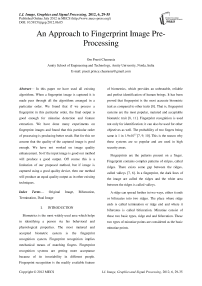An Approach to Fingerprint Image Pre-Processing
Автор: Om Preeti Chaurasia
Журнал: International Journal of Image, Graphics and Signal Processing(IJIGSP) @ijigsp
Статья в выпуске: 6 vol.4, 2012 года.
Бесплатный доступ
In this paper we have used all existing algorithms. When a fingerprint image is captured it is made pass through all the algorithms arranged in a particular order. We found that if we process a fingerprint in this particular order, the final output is good enough for minutiae detection and feature extraction. We have done many experiments on fingerprint images and found that this particular order of processing is producing better result. But for this we assume that the quality of the captured image is good enough. We have not worked on image quality enhancement. So if the input image is good our method will produce a good output. Off course this is a limitation of our proposed method, but if image is captured using a good quality device, then our method will produce an equal quality output as in other existing techniques.
Original Image, Bifurcation, Termination, Dual Image
Короткий адрес: https://sciup.org/15012331
IDR: 15012331
Текст научной статьи An Approach to Fingerprint Image Pre-Processing
Published Online July 2012 in MECS DOI: 10.5815/ijigsp.2012.06.05
Biometrics is the most widely used area which helps in identifying a person via his behavioral and physiological properties. The most matured and accepted biometric system is the fingerprint recognition system. Fingerprint recognition implies mechanical means of matching fingers. Fingerprint recognition systems are getting more acceptance because of its invariability in different people. Fingerprint recognition is the readily available feature of biometrics, which provides an unbeatable, reliable and perfect identification of human beings. It has been proved that fingerprint is the most accurate biometric trait as compared to other traits [8]. That is, fingerprint systems are the most popular, matured and acceptable biometric trait [8, 11]. Fingerprint recognition is used not only for identification; it can also be used for other objectives as well. The probability of two fingers being same is 1 in 1.9×1015 [7, 9, 10]. This is the reason why these systems are so popular and are used in high security areas.
Fingerprints are the patterns present on a finger. Fingerprint contains complex patterns of stripes, called ridges. There exists some gap between the ridges, called valleys [7, 6]. In a fingerprint, the dark lines of the image are called the ridges and the white area between the ridges is called valleys.
A ridge can spread further in two ways, either it ends or bifurcates into two ridges. The place where ridge ends is called termination or ridge end and where it bifurcates is called bifurcation. Minutiae consist of these two basic types, ridge end and bifurcation. These two types of minutiae points are considered as the basic minutiae points.
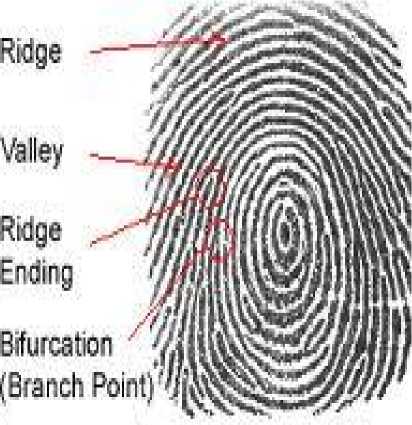
Fig.1: Basic Types of Minutiae in Fingerprints
Fingerprint recognition proceeds by identifying all the minutiae points and then extracting their features and last is to match the two points. Fingerprint Recognition involves three main steps. These steps need to be followed so that accurate matching of fingerprints can be performed. These steps involves:-
-
1. Image Pre-processing
-
2. Minutiae detection and feature extraction
-
3. Minutiae Matching
Pre-processing is an important step for (Fingerprint Recognition System) FRS. It enhances the quality and produces an image in which minutiae can be detected correctly. The final result of FRS also depends on this step.
Minutiae detection and feature extraction step involves refining of the thinned image, detecting the minutiae points and then extracting features from image. The most popular technique of minutiae detection is through the use of the crossing numbers approach [9].
Minutiae matching, the third step involves matching the template image with the input image. Template image is collected during enrolment and saved in the database. During recognition phase, the input image is compared against template image. This phase decides whether the two images are from the same finger or not.
During our research work we have concentrated upon how to process the given sample so that correct minutiae can be detected. Due to lack of time we have not worked on image quality enhancement and filtering of the image.
In II section, we are going to discuss the previous work done first. In III section, we will discuss about the proposed approach which will include explanation of all the algorithms used to produce a better quality image. In X section, conclusion and future work has been discussed.
-
II. PREVIOUS WORK DONE ON PREPROCESSING
The captured fingerprint image may contain various noises, thus cause poor matching result. To remove noise, the use of Directional Median Filter (DMF) was suggested in [1]. An improved method was proposed in [2] over [1] that is Directional Weighted Median Filter (DWMF). A new impulse detector, which is based on the differences between the current pixel and its neighbours aligned with four main directions, has been proposed in [2]. However in [4] five steps is proposed to get a high quality or enhanced fingerprint image. The steps are:
-
a. Normalization
-
b. Orientation Image Estimation
-
c. Frequency Image Estimation
-
d. Region Mask Generation
-
e. Filtering (Gabor Filter)
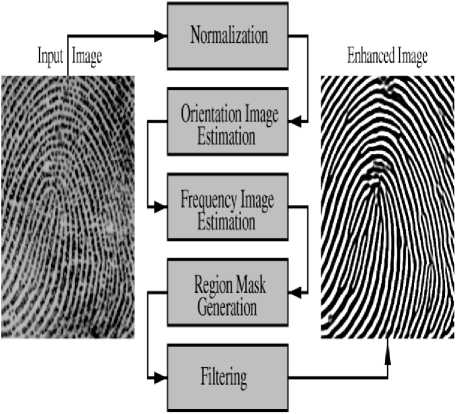
Fig. 2: Steps to get better image [4]
The output after applying the above 5 steps is clear enough to detect all minutiae, thus lead to better matching result. In [3] two approaches are described for fingerprint image enhancement.
-
a. Spatial Domain Method, which operates directly on pixels. The value of a pixel with coordinates ( x , y ) in the enhanced image F is the result of performing some operation on the pixels in the neighbourhood of ( x , y ) in the input image, F . Neighbourhoods can be any shape, but usually they are rectangular. It contains contrast image enhancement, negative image enhancement and histogram image enhancement etc.
-
b. Frequency Domain Method, which operates on Fourier transfer of an image. We simply compute the Fourier transform of the image to be enhanced, multiply the result by a filter (rather than convolve in the spatial domain), and take the inverse transform to produce the enhanced image.
The paper [5] introduces a new approach for fingerprint enhancement based on short time.
Fourier transform (STFT) Analysis. STFT is a well-known technique in signal processing to analyse non- stationary signals. The proposed algorithm in [5] estimates all the intrinsic properties of the fingerprints such as the foreground region mask, local ridge orientation and local ridge frequency.
-
III. PROPOSED APPROACH
The steps used in pre-processing are as follows:
-
1- Converting the given grey scale image to binary image (Binarization)
-
2- Central line thinning of the image.
-
3- Dilation of the thinned image
-
4- Thinning of the dilated image
-
5- Removing unwanted portions from the image (Refining)
-
6- Producing dual image
All of the above steps are explained in detail below. The above steps when performed sequentially, they produce image of very good quality which helps in identifying true minutiae points accurately. And these steps results in an accurate FRS.
-
IV. BINARIZATION
In Binarization, the grey scale image is converted into binary image. Binary images are easy to process. The basic principle of converting an image into binary is to decide a threshold value, and then the pixels whose value are more than the threshold are converted to white pixels, and the pixels whose value are below or equal to the threshold value are converted to black pixels. The threshold value has been decided using Otsu method. For better result, instead of calculating the threshold of the entire image we calculated threshold value of a small window (10 * 10) of the image and converted that segment into binary. Then the window is shifted to the next position and binarization is done. In this way the entire image is converted to binary. We have seen experimentally that this method produces a better result. This is popularly known as Recursive Otsu method [13].
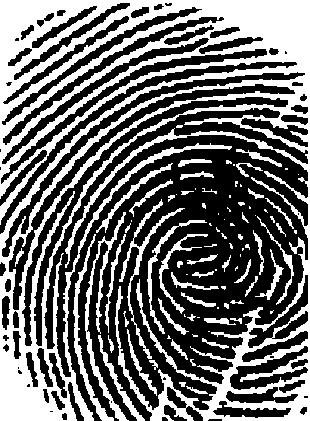
Fig.3: Normal Binarization
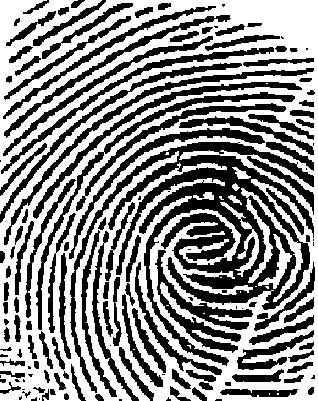
Fg.4: Binarization by Recursive Otsu method
to white or which black pixels to be kept as such. This results a thinned image.
It is easy to develop algorithm for minutiae detection in thinned image. If the width of ridge is more than one pixel, then it is very hard to develop algorithm for minutiae detection. In thinned image we have a single pixel width ridges.
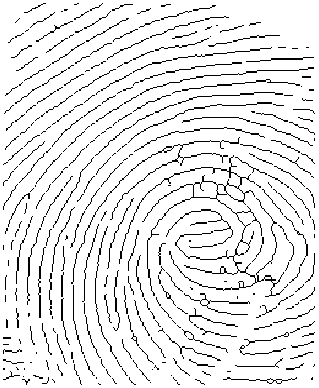
Fig.5: Output of Central Line Thinning
-
VI. DILATION OF THINNNED IMAGE
Dilation is process to make the given images smoother. All the holes are filled and the edges are smoothed in dilation. A structuring element has been used for dilation which is given below.
-
V. CENTRAL LINE THINNING OF THE IMAGE
In central line thinning, after we get the binary image, the next task is to thin the image. We followed the central line thining algorithm [7] to produce the thinned image. Central line thinning algorithm produces better result than other thinning algorithm because the basic structure and alignment of the ridges remain same after thinning as were in the original image. There are total 23 templates defined [7] for thinning algorithm. By referring to these templates the algorithm decides which black pixels to be converted

Fg.6: Structuring Element used for dilation
The dimension of the structuring element is 3×3. It is moved on the image sequentially and if any one of the branches coincides with black pixel, the central pixel is converted to black. Otherwise central pixel will be white.
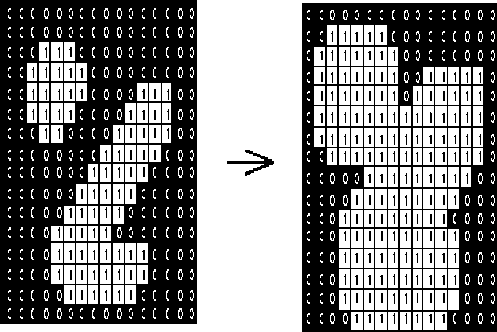
Fig.7: Dilation Process
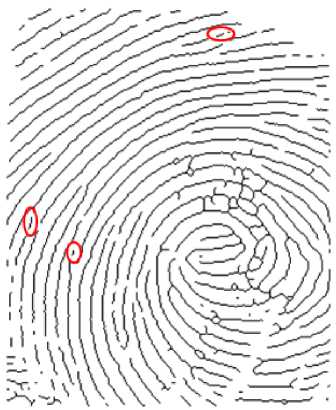
Fig.10: Figure shows some unwanted portions
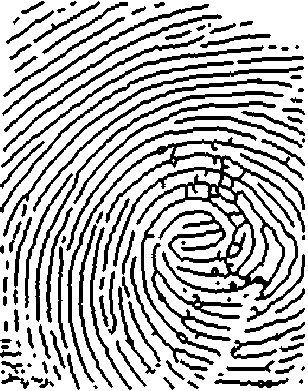
Fig.9: Image after Dilation
-
VII. THINNING OF DILATED IMAGE
In this step we simply thin the dilated image (output from previous step). The thinning technique is exactly same as the step-2 explained above.
-
VIII. REMOVING THE UNWANTED PORTIONS
There are many small unwanted portions that are unnecessary for further processing, but these portions if exist may lead to incorrect minutiae detection.
These portions usually consist of around 20 to 25 pixels. It is a heuristic approach to decide the number of pixels. The idea is to remove all connected components which have equal to or less than 20 pixels. To remove these first we have to find out all the connected components present in the image. We have used the algorithm given in [12] to find all the connected components and then we removed those portions which consists of less than or equal to 20 pixels. We named this step as Refining of the image.

Fig.11: Image after Refining
-
IX. PRODUCING DUAL IMAGE
Fingerprints show a typical characteristics called duality. It means ridges and valleys are dual of each other. If there is ridge end (considering the ridge), then there must be a bifurcation (considering the valley) near to it.
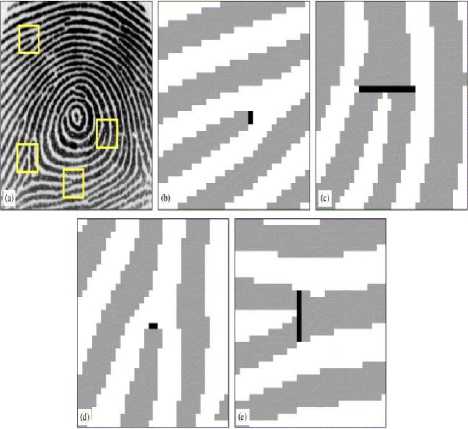
Fig.12: Figure shows the duality Property
From the above diagrams we can see that fingerprint shows duality property. We can exploit this character to get correct minutiae points. So we produced a dual image from the original image. Following figure shows the original image and its dual image. It is produced by thinning the negative image of the original image.
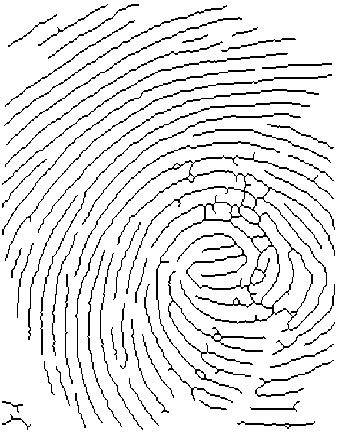
Fig.13: Original Image

Fig.14: Dual image
-
X. CONCLUSION AND FUTURE WORK
From all the steps explained above, we can see that it produces better images which are clearer and identifying minutiae points from them are easy. By following these steps sequentially, we can detect true minutiae points and FRS will produce accurate results. If a hybrid method can be developed using our proposed method and some existing methods, then it will be more efficient technique than the existing techniques. The advantage of our system is, if a good device is used to capture fingerprint image, we are neglecting image enhancement part which takes lesser time than other systems.
Список литературы An Approach to Fingerprint Image Pre-Processing
- Chaohong Wu, Zhixin Shi and Venu Govindaraju. “ Fingerprint Image Enhancement Method Using Directional Median Filter”.
- Yiqiu Dong and Shufang Xu. “A New Directional Weighted Median Filter for Removal of Random-Valued Impulse Noise”.
- Raju Sonavane , Dr. B.S. Sawant. “Noisy Fingerprint Image Enhancement Technique for Image Analysis: A Structure Similarity Measure Approach”. IJCSNS International Journal of Computer Science and Network Security, VOL.7 No.9, September 2007.
- Lin Hong, Yifei Wan, Anil Jain. “Fingerprint Image Enhancement: Algorithm and Performance Evaluation”. IEEE TRANSACTIONS ON PATTERN ANALYSIS AND MACHINE INTELLIGENCE, VOL. 20, NO. 8, AUGUST 1998.
- Sharat Chikkerur, Alexander N. Cartwright, Venu Govindaraju. “Fingerprint enhancement using STFT analysis”. Elsevier, 25th May 2006.Page: 198-211
- Sangram Bana and Dr. Davinder Kaur. Fingerprint Recognition using Image Segmentation. (IJAEST) INTERNATIONAL JOURNAL OF ADVANCED ENGINEERING SCIENCES AND TECHNOLOGIES Vol No. 5, Issue No. 1, 012 – 023
- Graig T. Diefenderfer, June 2006. Thesis on “Fingerprint Recognition” at Naval Postgraduate School, Monterey, California.
- Jyoti Rajharia, Dr. PC Gupta, Arvind Sharma. Fingerprint-Based Identification System:–A Survey. International Journal of Computer Technology and Electronics Engineering (IJCTEE) Volume 1, Issue 3
- F.A. Afsar, M. Arif and M. Hussain, Fingerprint Identification and Verification System using Minutiae matching, National Conference on Emerging Technologies 2004.
- Krithika Venkataramani a,, Vaibhav Kumar Singh. Fingerprint Identification : A brief literary review.
- Mar Mar Min and Yadana Thein. INTELLIGENT FINGERPRINT RECOGNITION SYSTEM WITH STATISTICAL AND GEOMETRICAL APPROACH.
- P. Kumar, S. R. Giri, G. R. Hegde and K. Verma, A Novel Algorithm to Extract Connected Components in a Binary Image of Vehicle License Plates, IJECCT 2012, Vol. 2 (2), Page 27-32.
- M. Cheriet, J. N. Said, and C. Y. Suen. “A Recursive Thresholding Technique for Image Segmentation”. IEEE TRANSACTIONS ON IMAGE PROCESSING, VOL. 7, NO. 6, JUNE 1998.

